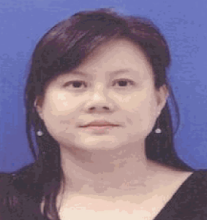
This photo was taken by Chriss during her study trip to Canada.....sunset....
What is Selective Mutism???
Selective mutism is a psychological disorder in children or adult. With this disorder they are fully capable in speech or understanding but can fail to speak / reluctant /withdrawn in certain social situation, and unable to participate in group activities due to their extreme anxiety.
Signs and Symptoms:-
· Consistently unable to speak when it comes to certain social situations, such as school. This can lead to both social isolation and withdrawal
· Has difficulty in maintaining eye contact
· Reluctant to smile; blank face expressions
· Body movements are always stiff and awkward
· Extraordinarily sensitive to noise, crowds and crowded situation
· Have difficulty with both verbal and non-verbal expression
· Oftentimes have frequent temper tantrums at home
· Excessively shy; have a fear of people
· Clinging behavior
· May also have an anxiety disorder, such as social phobia
Causes: -
· Some children with selective mutism may have Sensory Integration Dysfunction (SID), which causes the child to have trouble processing some sensory information. This would cause anxiety, which may cause the child to "shut down" and not be able to speak.
· Some children with selective mutism have speech or language disorders that add stress to situations in which the child is expected to speak. The stress caused by their language difficulties cause them to become anxious enough about speaking to become mute
· Abuse, neglect, or trauma can caused children suffered from selective mutism.
Treatments:-
The treatment of Selective Mutism requires a “WHOLE APPROACH” incorporating social, educational, psychological and at times psychiatric interventions. It is important to be creative, have patience, understanding and be flexible in all your interventions. Therefore, an open mind and holistic approach are of utmost importance.
· THERAPEUTIC INTERVENTIONS
- For young children, a play therapy approach is recommended. (Eg: Games, pretend situations, and coloring materials)
- Allow the child to take the lead. Do not force interaction or participation
- Music and art are wonderful tools for promoting interaction and communication
- Be creative. Use telephones, microphones, screens, puppets to allow the child a means of communication through projective approaches
- Teach the child relaxation, breathing and positive imagery techniques to help with anxiety.
- A change of environment (such as changing schools) may make a difference
· SCHOOL INTERVENTIONS
- Keep the child in regular mainstream classes
- Do not force the child to speak
- Allow the child to have a buddy system and participate in small group activities
- Allow the child to communicate in another way (for example by symbols, gestures, cards, email)
- Provide plenty of praise for any sound or attempt at communication the child makes
· HOME INTERVENTIONS
- Provide a safe and loving environment for the child.
- Accept the child for who they are.
- Do not use threats or punishments to get the child to talk.
- Be understanding and provide a secure environment for the child.
- Foster self-esteem and empowerment.
- Provide the child with plenty of opportunities to explore extra-curricular activities, such as swimming, gymnastics, art, theater or dance.
- Provide opportunities for after-school play-dates. Invite a peer that the child likes to the home, allow them free time to play and interact
- Provide plenty of praise and social rewards for communication.
SELECTIVE MUTISM VS AUTISM
Selective Mutism is sometimes erroneously mistaken for Autism. The striking difference between the two is that Autistic individuals have limited language ability, while individuals experiencing Selective Mutism are capable of speaking and normally do so in comfortable situations.
In short, the main difference between Selective Mutism and Autism is that the selectively mute child can communicate normally where in a situation which they feel comfortable and secured.
This photo was taken by Chriss during her study trip to New Zealand.
Psychological Scars(Selective Mutism) in Childhood Caused by Dysfunction Family and Divorce
A true case study:
This is a true story of a 10 year old boy. His parents have undergone a divorce when he was only 3 month old. After that, he was being raised up by his father alone, while the mother left for work overseas.
He has been suffering from attachment disorder in the process of growing up. The presence of a mother is very crucial in our childhood, especially for children aged between the ranges of 0-6 years old. It has been proven that there is a strong bond between a mother and child since pregnancy, and this intimacy is irreplaceable by anyone else. Therefore due to the absence of the mother during childhood, this little boy has turned out to be lack of sense of security, and sense of belonging.
At the age of 7, he has a dramatically change in life. The mother actually came back, and took him away from the father. Ever since the great changes in life, lately he has been diagnosed with Selective Mutism. Selective Mutism is a form of communication disorder in which a person, most often a child, who is normally capable of speech is unable to speak in given situations, or to specific people. Besides that, it can also be the consequences of attention seeking, due to the lack of love and attention.
Now that he has turned into 10 years old, and his condition has deteriorated into totally muteness. We can see the tragedy impact on a child caused by a broken marriage. Therefore, we should live our live with a compassionate heart, and be conscious of every single decision made by us as a parent, as we might caused our loves one to be a victim due to the mistake we have made.



